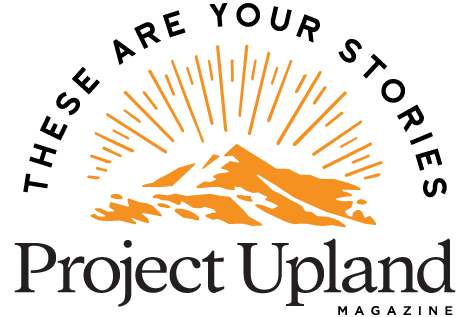Home » Waterfowl Hunting » Snow Goose (Anser caerulescens) – Waterfowl Species Profile
Snow Goose (Anser caerulescens) – Waterfowl Species Profile

Ryan Lisson is a biologist and regular content contributor to…
A closer look at the biology, history, and habitat of the snow goose.
The snow goose (Anser caerulescens) is an interesting species of waterfowl that comes in two color phases: the white phase (typically referred to as a “snow goose”) and the dark phase (often called a “blue goose”). Several color variations occur between these two phases. Their name makes sense, considering their bright white feathers and their breeding areas that occur in the Arctic tundra. Conservation efforts were so successful for this bird that soaring populations are now causing problems for the environment and with people.
Description and Life History of the Snow Goose
There are two subspecies of snow goose: the lesser snow goose (A. c. caerulescens) and the greater snow goose (A. c. atlantica). The greater snow goose is slightly larger, nests further northeast than the lesser, has no color dimorphism, or color phases (Ducks Unlimited 2020). Therefore, if you see a “blue goose” it will almost certainly be a lesser subspecies or hybrid. Either way, snow geese are smaller than a Canada goose. The greater snow goose is typically 30 inches long and weighs six to eight pounds, while the lesser snow goose is slightly smaller at 28 to 29 inches long and five to six pounds (Ducks Unlimited 2020). Because they’re so similar, it’s usually impossible to tell them apart in the field.
The white phase/morph of both subspecies has a body of all white feathers, save for their black wing tips. They have pinkish-orange bills with black serrated edges (called a “grinning patch”) and pink legs (All About Birds 2020). A pure blue phase/morph has dark bluish-gray feathers over nearly its whole body except for sometimes a white head. Their bills and legs are the same as the white morph. There can also be intermediate phases where the ratio of gray to white feathers changes. The Ross’s goose can also breed with snow geese and produce even more diluted hybrids that are difficult to identify.
Snow geese often mate for life and nest in large colonies, which sometimes consist of 1,200 pairs per square mile (NatureServe 2020). The female typically picks a site on a slight hummock for good visibility but adjacent to water or some kind of low cover. She then lines a large, shallow depression with dead grasses, twigs, seaweed, and downy feathers (National Audubon Society 2020). Females usually lay two to six creamy white eggs and incubate them for 22 to 25 days (All About Birds 2020; National Audubon Society 2020). The male usually stays with the female and defends it against predators during the incubation period. After hatching, both parents and the goslings leave the nest site to feed; these family groups may stay together until the following nesting season (NatureServe 2020).
The snow goose uses its unique bill design to feed on different types of vegetation. Its serrated edge makes it easier for them to graze on grasses and aquatic plants, while its overall stout build can handle grain/seeds and uproot bulbs and rhizomes (NatureServe 2020). In general, marsh grasses, sedges, rushes, forbs, and shrubs are all included in their breeding season diet (All About Birds 2020). Goslings also eat berries, flowers, and insects where available. During the winter, they will frequently use crop fields to eat grain and grasses.
Snow geese are most susceptible to predation during the breeding season, which includes the eggs, goslings, and adults alike. Likely predators that are common in the arctic include gulls, ravens, jaeger birds, eagles, snowy owls, foxes, wolves, bears… plus nests are susceptible to trampling by caribou (All About Birds 2020).

Range and Habitat of the Snow Goose
While both subspecies breed in the Arctic and Subarctic regions, there are some unique geographical tendencies for each. Lesser snow geese generally occur across the northern edge of Alaska, the Northwest Territories, around Hudson Bay, and on Baffin Island, while the greater snow goose prefers the northernmost island systems in Nunavut and Greenland (Ducks Unlimited 2020). Flocks usually arrive in breeding areas by early June at the latest and reverse course to wintering areas by August (NatureServe 2020). They usually spend their winter in coastal areas or along large river systems in the interior states, all the way down to the Gulf Coast and Mexico. Three mostly separate populations occur, including eastern, central, and western groups. Snow geese tend to use the same nesting and wintering areas each year, following specific migration paths according to their population group.
During the summer, snow geese nest in rolling tundra areas within five miles of waterbodies (e.g., coastlines, ponds, lakes, rivers) (National Audubon Society 2020). They utilize any kind of raised hummocks for visibility or willow cover to hide their nests (NatureServe 2020). During their migration, they often stop to use lakes, farm fields, marshes, and river systems. In the winter, they use salt marshes, estuaries, freshwater systems, grasslands/pastures, flooded farm fields, and croplands (National Audubon Society 2020; All About Birds 2020).
Conservation Issues for the Snow Goose
The snow goose population is estimated to have tripled since 1973 (NatureServe 2020). Not surprisingly, it is listed as globally secure and of Least Concern by the IUCN Red List (NatureServe 2020). It’s likely that warming conditions in the arctic have expanded the range of breeding grounds, causing the population boom. Because breeding areas are so remote and untouched by humans, the geese are the only ones responsible for habitat degradation. Large numbers of geese can quickly devastate the vegetation during the breeding season, which has long-term effects (All About Birds 2020). Due to concerns about these habitat impacts, the Light Goose Conservation Order was mandated in 1999 to reduce the snow goose population. This allows hunting light geese in the spring as flocks return to their northern breeding grounds. Since then, hunters in the U.S. and Canada annually harvest approximately 400,000 birds (All About Birds 2020).
Hunting Opportunities for the Snow Goose
Both phases of snow goose are often combined with the Ross’s goose and referred to as “light geese” in various hunting regulations. Under the Conservation Order for Light Geese (50 CFR §21.60), other federal restrictions are also eliminated, including no bag limits, extended shooting hours, no need to plug shotguns, and the ability to use electronic callers. Sounds great, right? Well, while staring at a flock of thousands of geese overhead with few restrictions might sound great, you know that’s only part of the story. Hunting snow geese can be a frustrating and humbling experience. It’s still magical to see and hear such large flocks, but it can also be an exercise in patience.
Equipment and Bag Limits
As with almost any goose hunt, you will need a hunting license/federal waterfowl stamp, a 12-gauge shotgun, non-toxic shotgun shells (e.g., steel, tungsten, bismuth, etc.), and a good blind to hide from all those eyes. If hunting during a spring light goose season, you usually only need a hunting license, not a federal stamp. But one thing you will absolutely need for hunting snow geese is decoys – a lot of them. Since the issuance of the conservation order, flocks of light geese have been shot at for generations and have seen almost any kind of spread you can think of. As a result, it usually takes a huge decoy spread to convince them to come close enough for a shot. If you can’t afford or manage hundreds or thousands of decoys, then seeking a waterfowl outfitter for a snow goose hunt is probably the better bet.
The current daily bag limit varies among states during the usual hunting season, from only a few birds to 50 birds (in North Dakota). But while on a light goose conservation order hunt, there is no daily bag limit. Please check your specific state and location for the current limit.
Snow Goose Hunting Techniques
The nice thing about snow geese is that you have an opportunity to hunt them in the late winter and spring, when waterfowl season is over. But a critical part of a spring snow goose hunt is to spend enough time scouting to know where the birds will be. Since the geese are trying to move north as soon as they can, you can usually find large flocks stalled wherever the snow starts. Spend some time looking at crop fields and pastures near this line where the geese can still feed on exposed ground. Once you find the geese, start knocking on doors to see if you can get access permission. Most farmers would like to reduce goose populations too, but some may have been burned before. Be respectful and grateful for any opportunity to use their land.
Getting back to the decoys, one of the best, not-so-secret weapons of snow goose hunting is to add some motion. Regardless of how large your spread is, keep some snow goose flags in your blind, some socks (or white garbage bags) scattered around, and even use battery-powered dekes for an extra edge. Keeping the motion close to you usually means you will have a better chance to get some shooting in. Also, keep the landing zone on the upwind side (near you), as snow geese like to land on the upwind side of a feeding flock.
Huge flocks of snow geese are very noisy, drowning out even your loudest goose calls. That’s one of the reasons you can use electronic calls and amplifiers during conservation order hunts. Don’t be afraid to really let it out to get their attention if the decoys aren’t enticing enough.
Last, having a good retrieving dog in your blind saves you a lot of legwork when you’re shooting at hundreds or thousands of geese at a time, in some cases with no bag limit. If your pup is up for it, you’re in for a memorable hunt.
Ryan Lisson is a biologist and regular content contributor to several outdoor manufacturers, hunting shows, publications, and blogs. He is an avid small game, turkey, and whitetail hunter from northern Minnesota and loves managing habitat almost as much as hunting. Ryan is also passionate about helping other adults experience the outdoors for their first time, which spurred him to launch Zero to Hunt, a website devoted to mentoring new hunters.



